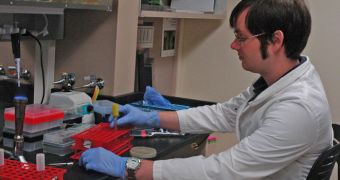A recent set of studies reveals the methods some bacteria employ in order to destroy competition. Many colonies fight to keep other invading cells at bay, and researchers have just obtained a deep insight into one of these elaborate strategies.
According to investigators, one of the technique certain species of microorganisms prefer is to break down the cellular walls of their rivals. This exposes the contents of the cell to the environment, essentially destroying the organism.
Interestingly, this approach appears to be mostly favored by disease-causing bacteria. Knowing this could conceivably help investigators develop new strategies of counteracting infections in hospitals.
One good example of this is Pseudomonas aeruginosa, a bacteria that is responsible for a large number of human deaths from hospital-acquired infections ever single years. It can develop biofilms and grow on nearly every type of surface, including organs, medical instruments, wounds and so on.
P. aeruginosa's ability to colonize everything has baffled researchers for years, which is why researchers at the University of Washington in Seattle (UWS) decided to conduct this research effort.
The work was conducted by assistant professor of microbiology Joseph Mougous. He was mostly interested in how this particular species was capable of maintaining an advantage over other types of invading bacteria. The expert suspected a hidden mechanism must be at work.
Investigators determined that P. aeruginosa can maintain its edge over competitors because it uses a type VI secretion system, a specialized system that is capable of injecting competing microorganisms with highly-toxic proteins, that break down their cellular walls.
This happens when the toxic molecules attach peptoglycan, a type of structural protein located in bacterial cellular walls. Experts generally refer to this protein as the Achilles heel of bacteria. Details of the new work appear in the July 21 issue of the top scientific journal Nature.
In order to protect itself from the effects of its own byproducts, P. aeruginosa uses specialized immunity proteins, that are placed at strategic locations across its cellular surface. The toxic proteins it produces therefore have no effect on its colonies.
The US National Science Foundation (NSF), the National Institutes of Health (NIH) and the European Commission provided the funding required for the new investigation.

 14 DAY TRIAL //
14 DAY TRIAL //